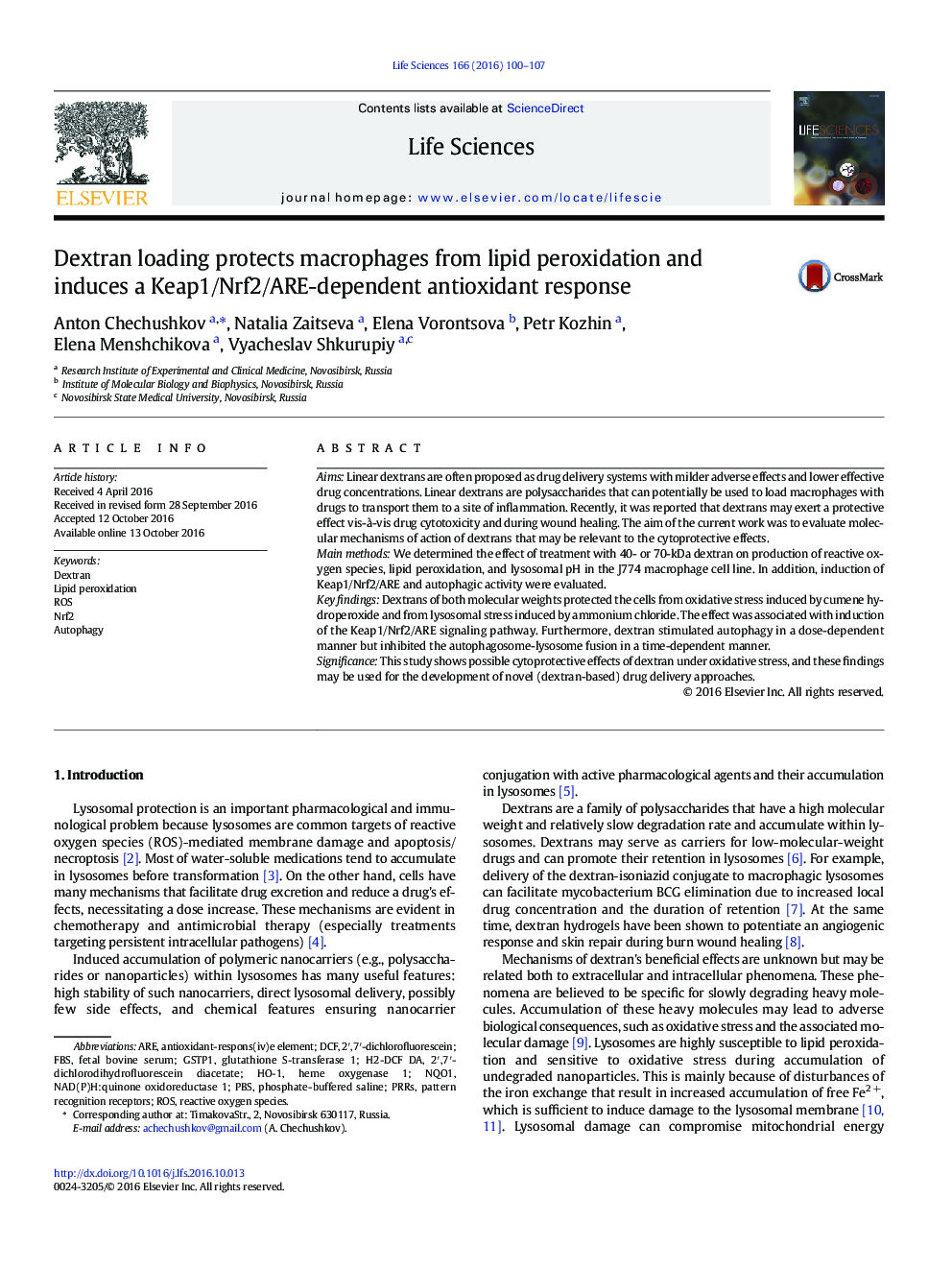| Article ID | Journal | Published Year | Pages | File Type |
|---|---|---|---|---|
| 5557097 | Life Sciences | 2016 | 8 Pages |
â¢40 and 70 kDa dextran protects J774 cells against CH-induced lipid peroxidation.â¢Dextrans induce Keap1/Nrf2/ARE-dependent antioxidant response.â¢Dextran 70 kDa induce autophagy but not influence or decrease autophagic flux.
AimsLinear dextrans are often proposed as drug delivery systems with milder adverse effects and lower effective drug concentrations. Linear dextrans are polysaccharides that can potentially be used to load macrophages with drugs to transport them to a site of inflammation. Recently, it was reported that dextrans may exert a protective effect vis-Ã -vis drug cytotoxicity and during wound healing. The aim of the current work was to evaluate molecular mechanisms of action of dextrans that may be relevant to the cytoprotective effects.Main methodsWe determined the effect of treatment with 40- or 70-kDa dextran on production of reactive oxygen species, lipid peroxidation, and lysosomal pH in the J774 macrophage cell line. In addition, induction of Keap1/Nrf2/ARE and autophagic activity were evaluated.Key findingsDextrans of both molecular weights protected the cells from oxidative stress induced by cumene hydroperoxide and from lysosomal stress induced by ammonium chloride. The effect was associated with induction of the Keap1/Nrf2/ARE signaling pathway. Furthermore, dextran stimulated autophagy in a dose-dependent manner but inhibited the autophagosome-lysosome fusion in a time-dependent manner.SignificanceThis study shows possible cytoprotective effects of dextran under oxidative stress, and these findings may be used for the development of novel (dextran-based) drug delivery approaches.
Graphical abstractDownload high-res image (150KB)Download full-size image
